Licensing
Hi. My name is Dr. Tommy Thomas. I am the developer of the Opposite Strengths system and the #1 proponent of licensing.
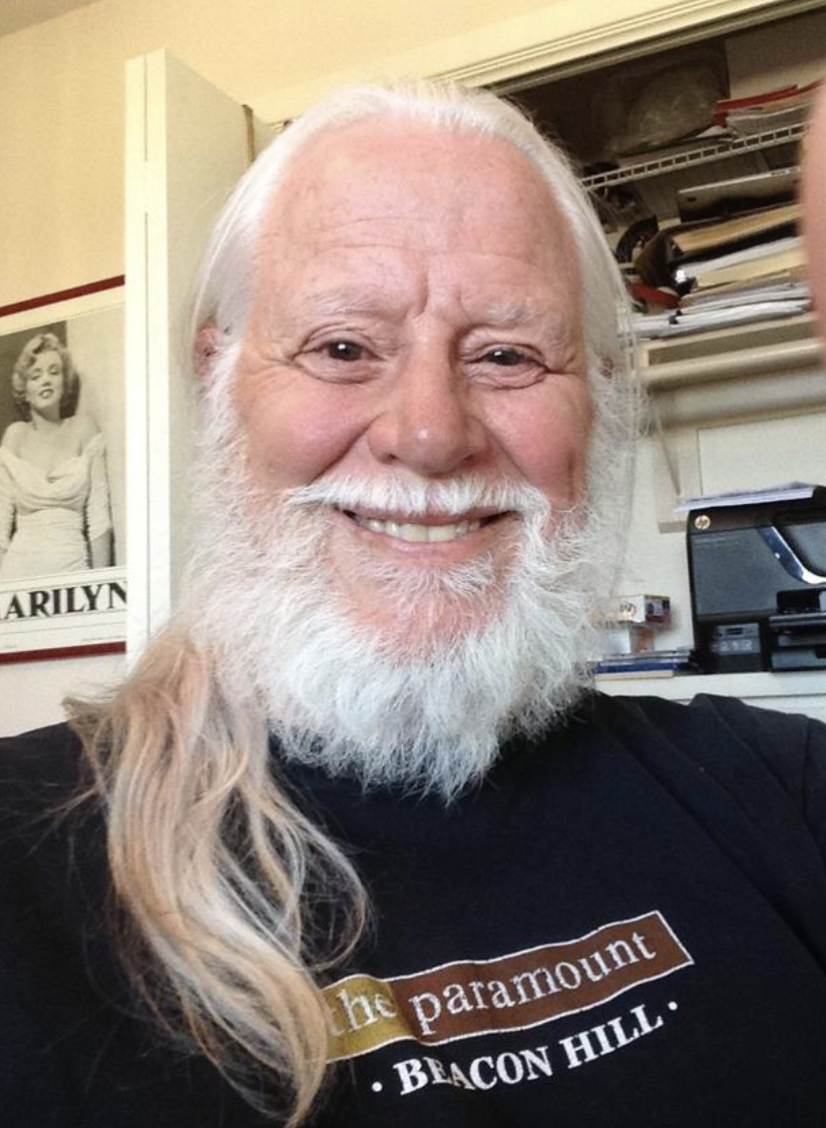
Licenses Give Permission to People and Organizations
to Access Our Years of Experience
Licensing the Opposite Strengths intellectual property library is the lifeblood of what we do. People throughout the world have gained access to the benefits of understanding and using Opposite Strengths through our various licenses for use, facilitation, coaching, and culture transformation to people and organizations.
Who Benefits From Opposite Strengths?
People from all walks of life use Opposite Strengths in their daily lives to strengthen their relationships, maximize their personal success, and solve the problems that they create simply by being who they are.
Opposite Strengths is used by individuals, professionals, and organizations all over the world. More than 200,000 individuals are using Opposite Strengths, over 1,000 professionals have been certified to deliver it to their clients, and more than 1,500 organizations have embraced it to transform their cultures.
Now Get Your Own Personal License and Benefits of
Opposite Strengths AT NO COST TO YOU
Through our licensing, we give people and organizations access to Opposite Strengths for their benefit. Since 1966, we have sold these licenses in various forms. But beginning in December 2020, we decided that it was time to get Opposite Strengths out to everyone who wanted it regardless of his or her ability to pay. We want to assist everyone on the life journey to find themselves.
Unlimited Opposite Strengths Inventories AND
Viewings of Your Strengths At A Glance
So … we licensed individuals worldwide to BOTH complete Opposite Strengths Self-report and Other-report Inventories AND access our free video report Your Strengths At A Glance at absolutely no cost. As many Opposite Strengths Inventories as you want to submit and as many viewings of Your Strengths At A Glance as you wish…whenever you wish.
That’s right. People across the globe are now licensed to access the personal benefits of Opposite Strengths using Opposite Strengths Inventories and my customized video report Your Strengths At A Glance at absolutely no cost. Just go to our home page and sign up to view your own customized video report Your Strengths At A Glance. You can begin reaping the lifelong benefits of using Opposite Strengths at absolutely no cost or obligation!
But Wait … There’s More!
(I’ve Always Wanted To Say That)
That’s right. Much more. If you find the insights from Your Strengths At A Glance to be helpful and pique your interest as to how else you might benefit from Opposite Strengths, then you will be presented with the opportunity to acquire a much more valuable license – a renewable annual Find Yourself subscription to many benefits available right here on OppositeStrengths.com — books you can read, additional assessment reports based on your Inventories, videos you can watch on-demand online, and much more.
So … click here to sign up for the free Opposite Strengths Inventories and video report Your Strengths At A Glance and discover how you can benefit from Opposite Strengths.
The Real Credit for Opposite Strengths Goes To…
Now … back to the story of Opposite Strengths. Although I played a large role in developing Opposite Strengths since 1982, the real credit for Opposite Strengths goes to my father Dr. Jay Thomas. Jay created the Opposite Strengths system out of his pioneering work as a Licensed Psychologist and one of the very first executive coaches in the world during the 1950s and 1960s.

His clients were top executives of some of the fastest growing and largest organizations in the United States. Since they weren’t seeking therapy, they wondered what a psychologist could do to help them. They were interested in growing their companies, not some psychobabble that they couldn’t put to good use.
So that was the task that Jay undertook in his role as an executive coach using his training as a psychologist — to understand the growth process – what it was and how it worked and how understanding it can help people and organizations.
And always focus on a positive approach.
Discovering the Growth Process
It really started with his 1954 dissertation before he graduated with his doctorate at what was then Oklahoma A&M University (now Oklahoma State University). His research results were unexpected and puzzling. Here’s why.
His research group was the men’s basketball team. He thought that these guys would be most productive if they were under pressure. So he created three groups – one was under pressure, one was relaxed, and one was alternately under pressure and then relaxed.
Guess which one was most productive.
The Answer Will Surprise You
If you said the group that was under pressure all the time or relaxed all the time, you’d be wrong. The group that did the best was the group that alternated between these two states.
And although he didn’t realize it at the time, that was the beginning of his understanding of the growth process.
Understanding the Key to the Growth Process Took
Eight Years of Working with Successful People
After eight years of consulting and coaching top executives from 1955 through 1963, Jay decided that he needed to make sense of what made these executives successful by taking a hard look at his experiences with them.
First he tried the either/or method. You know, either this or that but not both. He tried categorizing these executives and thought that his categories would show the natural characteristics that led to success. Seemed like a logical approach, didn’t it?
Sometimes You Have to Think Differently
But as he investigated he discovered that some executives were careful and analytical while others were dynamic and decisive. Some were fact-driven and realistic while others were focused on possibilities and imaginative. Some were self-confident and self-sufficient while others were supportive of others and team-oriented.
Approaches to Understanding People Through
Categorization Without Including the Growth Process
Always Fall Short
As hard as he tried, he couldn’t find any one category or combination of categories that led to success more than any other. At this same time, the Myers-Briggs Type Indicator (MBTI) and DiSC were being developed but without any nod to the idea of growth — they focused solely on categorization as the end-all of understanding people. Not much has changed with them over the years.
Jay knew that such an approach would ultimately be ineffective in helping people truly find themselves and learn the skill to change one’s behavior through the growth process. Those approaches would never show people how to solve the problems they created by simply being themselves.
Then he thought back to his dissertation and the alternating states of pressure and relaxation that led to problem solving success.
Growth is the Key that Unlocks Every Door to Your Success
As he started to apply that insight into a deep understanding of what makes people successful, it came to him that the most successful people — like the large group of executives whom he coached along the path of growth — alternate between the naturally opposite strengths that everyone possesses.
So he began using this insight in coaching his executive clients. His clients began to understand that they themselves created most of their own problems when they didn’t alternate between their strengths. The paradox before them was that, in order to be successful, they had to learn to be themselves and flex to the strengths that didn’t come naturally to them.
Our Licensing Program Grew Out of Necessity
What started our licensing program was the fact that Jay could not deliver Opposite Strengths to all the people who wanted it – like everyone else, his time was limited.
In the 1960s he was delivering it one by one to the executives he coached. When one of those executives told him that he needed to develop a program in which a group of people could learn it together, he developed a group seminar to do just that. Each of those seminar participants got a license to use the Opposite Strengths materials — at that time the Opposite Strengths Inventories and a seminar workbook (no Internet at that time!).
The popularity of the seminar led to another problem – he couldn’t deliver all the seminars that were in big demand. But how could he maintain the quality of the seminars that he was facilitating? After all, he knew the content was solid because he wrote it from his experience working with highly successful people.
Want to Maintain Quality? Licensing is the Answer
So Jay started training and certifying selected other professionals to lead the seminar. Each of those people — we call them Opposite Strengths Certified Facilitators — gained a license to deliver Opposite Strengths to groups of people through our Opposite Strengths Seminar.
Since 1966, over 1,200 people have been trained as Opposite Strengths Certified Facilitators and have facilitated over 20,000 Opposite Strengths Seminars.
You Can Become an Opposite Strengths Certified Facilitator
For more information about becoming an Opposite Strengths Certified Facilitator, email me. In addition to being CEO of Opposite Strengths, I am also Dean of the Opposite Strengths Faculty and supervise the certification of all new Opposite Strengths Certified Facilitators.
Shifting to Organizational Culture Transformations
In the 1980s, we shifted our focus to a broader vision. We moved from training and educating individuals for their personal benefits to transforming cultures for organizations. We did this by employing an organization-wide effort to train and educate all employees of a specific organization.
Since then, more than 1,500 organizations have implemented Opposite Strengths as their “language of communication and relationships” and over 200,000 people have attended an Opposite Strengths Seminar led by an Opposite Strengths Certified Facilitator.
Organizations Embrace Opposite Strengths
Here are some of the many organizations that have embraced Opposite Strengths. Do you know one of the main reasons why organizations such as these choose Opposite Strengths as their language of relationships and communication?
















































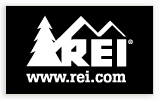










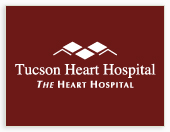



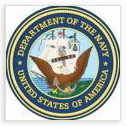










Healthcare organizations throughout the United States





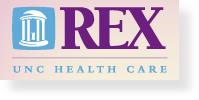













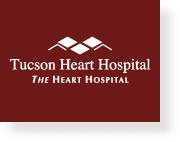








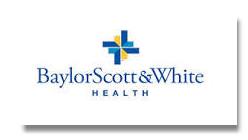


The Needless Waste from Voluntary Employee Turnover
Many organizations spend millions of dollars every year in voluntary employee turnover costs. And did you know that much of employee turnover takes place because employees are dissatisfied with their relationship with their boss or with the overall culture of the organization?
Reducing Voluntary Employee Turnover Saves $Millions
As Opposite Strengths gained in popularity, entire organizations began demanding Opposite Strengths so that the entire organization could grow just as individual people can grow. Those new organizational licenses were for implementing broad-scale culture transformations of those organizations.
Opposite Strengths licenses our sponsoring organizations to provide Opposite Strengths Seminars, Opposite Strengths Coaching, and all of our online and on-demand delivery of Opposite Strengths intellectual property to their employees and customers.
And in 2020 we added the ability to conduct the Opposite Strengths Seminar virtually. You can now attend a live Opposite Strengths Seminar led by a skilled Opposite Strengths Certified Facilitator from the comfort of your home or office. No longer do you have to travel to attend one of our seminars.
Here is one example of a healthcare organization on a mission to improve quality and win a prestigious national quality award.
Strategizing for a Sticky Organization
In 1998, under the leadership of CEO Rulon Stacey, PhD, FACHE, Poudre Valley Health System (PVHS) developed a consensus of the Board of Directors and senior management to embark on a mission of creating a community within the organization by transforming PVHS into a “sticky” organization — an organization that attracts and retains a highly engaged workforce. To accomplish this mission, PVHS embraced Opposite Strengths as a common language of communication and strengths among all its employees.
Infusing Opposite Strengths into the PVHS Culture
Starting with Dr. Stacey’s senior management team and the Board of Directors of PVHS in 1998, PVHS began incorporating Opposite Strengths as a common language of communication at the levels of senior management and governance. This support and inclusion was seen as crucial in creating acceptance of Opposite Strengths among all PVHS employees.
From 1998 through 2008, 3,400 employees of the then 4,200-employee system learned the Opposite Strengths language.
“Stickiness” – Attracting and Retaining
The first part of creating a “sticky” organization is attracting the best and brightest people to apply for positions created both by turnover and by organizational growth. When an organization becomes attractive, costs of hiring and recruiting are reduced. Dr. Stacey reports that, in 2006, PVHS had 800 open positions and 41,000 applicants – 51 applicants per position. In 2007, the situation was similar with 500 open positions and 31,000 applications – 62 applicants per position.
The second and equally important other measure of the “stickiness” of an organization is the voluntary-turnover rate. In 1998, the year that PVHS began to measure the voluntary-turnover rate, the voluntary-turnover rate at PVHS was 23%. After 10 years of using Opposite Strengths and seeing a steady decline in voluntary turnover, the voluntary-turnover rate for 2007 had dropped to 4%. Compared with an industry standard voluntary-turnover rate of 20%, PVHS clearly had accomplished a major reduction in voluntary turnover as well as created a positive, energized, and successful culture within which to work.
Financial Benefit to PVHS
Dr. Stacey reports that, if PVHS’ voluntary-turnover rate were at the national average of 20% (remember that PVHS’ rate started in 1998 above the national average at 23%), the annual cost to PVHS would be a whopping $42,000,000. But because the actual PVHS voluntary-turnover rate is 4%, the actual cost of voluntary turnover is only $10,000,000.
Thus, due to its lower voluntary-turnover rate compared to the industry average, PVHS saved $32,000,000 each year in direct costs related to voluntary turnover.
Accolades for PVHS
Poudre Valley Hospital was named a Top 100 Hospital by Thomson Healthcare for the five consecutive years of 2003-2007, one of only eight hospitals in the country to achieve that distinction. In September 2008, Modern Healthcare named PVHS one of America’s 100 best places to work in health care.
PVHS was a finalist for the Malcolm Baldrige National Quality Award in 2005, 2006, and 2007, and, in November 2008, won the Malcolm Baldrige National Quality Award – one of only three organizations and the only healthcare organization to win in 2008.
An Opposite Strengths License for Your Organization
Opposite Strengths can work for you just as it did for PVHS. Contact me for information on how to obtain an organizational license for your business.
The Popularity of Coaching Expands Dramatically
You know that Jay was one of the very first executive coaches in the United States. But he didn’t use that term. The first firm he worked for – now RHR International – called themselves “psychological consultants to management”. Pretty fancy, huh?
In the 1990s and 2000s coaching as a profession (life coaches, career coaches, executive coaches, etc.) became more and more popular. Not just psychologists but anyone interested in being trained and working with people as personal coaches joined the coaching profession.
A New Certification and License
Since Opposite Strengths was born out of the genesis of executive coaching, in 2006 I made a decision to develop and offer a training and certification program to create Opposite Strengths Certified Coaches. Like Opposite Strengths Certified Facilitators, our Coaches were grounded in a deep understanding of Opposite Strengths. But instead of being trained in the intricacies of facilitating the Opposite Strengths Seminar, Coaches were trained in using Opposite Strengths in a more direct application with both individuals and groups to put Opposite Strengths to work right away in specific ways.
Opposite Strengths Certified Coaches have a license to use Opposite Strengths with their clients, and, if they wish, their clients can get a license for a Find Yourself subscription so as to gain the greatest understanding and benefit from Opposite Strengths as they work with their Coach.
As the Dean of the Opposite Strengths Faculty, I supervise all of the training of our Opposite Strengths Coach Certificate Program that produces new Coaches and gives each one of them a license to use Opposite Strengths in their practice. Contact me if you are interested in getting your own license and becoming an Opposite Strengths Certified Coach.
Opposite Strengths Joins the Virtual Revolution
In 1998, just before Jay’s 80th birthday, I knew that the window of opportunity for my idea of interviewing Jay about Opposite Strengths wasn’t going to be open forever. So I hired a professional video company to film me interviewing Jay at his home to record the story and content of Opposite Strengths from the executive coach who discovered it.
The filming was a great success. After recording Jay’s personal rendition of where Opposite Strengths had come from, I then mentally went through the Opposite Strengths Seminar in my head and asked Jay questions. His answers were as though I was attending a one-person Opposite Strengths Seminar facilitated by the originator of Opposite Strengths.
But I didn’t know what to do with this footage. So I simply sat on it until it became clear to me what to do.
Around 2014, I felt the strong need that Opposite Strengths needed to be available to more people. Our current method of operations required the use of an Opposite Strengths Certified Coach or Certified Facilitator in a live setting. How could I deliver the experience of Opposite Strengths to those who did not have the opportunity to work with one of these Certified professionals?
The On-Demand Online Seminar is Born
I thought back to those videos. Why couldn’t I edit those videos into small chunks, include the online reports that Find Yourself subscribers could generate on their own, and combine it all with excerpts from our book The Power of Opposite Strengths? I could put all that online on OppositeStrengths.com. Then all Find Yourself subscribers at any time could experience the Opposite Strengths Seminar at their own pace on demand.
So that’s what I did. The result is the Opposite Strengths Online Seminar. Available on demand any time you wish. Customized with your own professional reports based on your Opposite Strengths Inventories. And with Jay himself leading you on your journey to find yourself. What could be better than that?
We Were Not Alone
For many years those of us using Opposite Strengths believed that we were alone in our teaching people to use this fundamental concept of both/and in our work – to embrace the idea that our growth is embedded in our abilities to alternate between our strengths.
Then in 1993 one of my clients showed me a book titled Polarity Management written by Barry Johnson and published in 1992. I took it and read it.

I was dumbfounded. I thought for sure that Barry had attended one of our seminars and then had taken the concept of growth and applied it specifically to management in organizations.
Parallel Discovery
But I was wrong. Barry was unaware of our work with Opposite Strengths — he had developed these insights on his own.
I didn’t try to contact Barry or let him know how valuable I thought his work was and that we were kindred spirits. That is, not until 15 years later.

Our Paths Finally Meet
Through a mutual professional colleague, I got to know Leslie DePol, the CEO of Polarity Partnerships. Leslie works closely with Barry, the Polarity Partnerships' Team, Strategic Partners, and the broader community of practice that applies the Polarity Map®, the Polarity Assessment™, and other Polarity related concepts, tools, and practices to intentionally and systematically leverage the inherent power of both/and approaches just as we do.

Both Barry and Jay dedicated their life work to better understand how the phenomenon of interdependent opposites and both/and thinking can drive personal and organizational growth. While complementary, their approaches were unique.
The Four Fundamental Relationships In Your Life
You see, Opposite Strengths is the application of the both/and concept to the field of psychology and understanding people through strengths. We don’t go outside this application — but we do go very deep. Opposite Strengths is a very robust psychological system with broad application to people and their relationships.
If you obtain your own Find Yourself subscription, you will discover all that we have developed on applying the both/and concept to your life and the lives of others. In fact, I like to think of what we have done as understanding all the relationships in your lives — all four of them.
The Relationship Between Your Opposite Strengths
The first is the relationship between your strengths – the relationship that is the foundation of your growth. We have identified three pairs of strengths. Each is separate from other two but taken together these three pairs of strengths account for practically all that we do in our lives.
And at the core of the success of each of these three pairs of strengths is the both/and concept – that each one of the strengths is 100% dependent upon the use of the opposite one in order to gain its own success.
Your Relationship with Yourself
The second of your relationships is your relationship with yourself. Now you might think that odd to consider that you have a relationship with yourself. But think about it. You talk to yourself — inside your head if not by moving your lips. You evaluate yourself. You probably like yourself sometimes and sometimes you wish you didn’t do the things you do.
All this boils down to the fact that you have a relationship with yourself. We don’t normally think of ourselves having a relationship with ourselves but we do.
And what Opposite Strengths does extremely well and extremely deep is to help you to understand yourself, your natural way of being, and your flexible self.
And at the core of this understanding is the realization that not only are your strengths equally valuable to you but you are equally valuable to every other person who has lived or is living on this planet Earth. This concept of equality runs deep in civilized thinking and is essential for a healthy human being and civilizations to function beneficially for all.
Your Relationship With Another Person
The third of your relationships is your relationship with one other person. This is probably what you think of when you think of relationships – your relationship with a friend, your spouse, a co-worker, or your children.
Opposite Strengths also explains the dynamics of this type of relationship very well. We wrote and published the Relationship Manual (available online in pdf format when you invest in a Find Yourself subscription) that describes in detail the 36 different relationships that exist between different kinds of people. The Relationship Manual was so successful that we transformed it into an online, interactive, customized, and personalized Relationship Guide (also available with your Find Yourself subscription) – available on demand for your relationship with any other person who has a Find Yourself subscription.
You can use this Relationship Guide to gain instant access to what amounts to decades of professional experience in understanding your specific relationship with another person — whether it be your spouse, your boss, your child, your friend, or whomever.
Leadership – Your Relationship With a Group of People
The fourth and final type of relationship that you have is your relationship with groups of people. Some examples would be your family, the team with which you work, the friends that you hang out with.
If you happen to have a role as a manager, supervisor, or CEO of an organization, then you can think of your relationship with a group of people as leadership.
I have studied many leadership experts and all of them say that the great leaders know who they are — they have found themselves. So Opposite Strengths is a terrific foundation for those who aspire to great leadership.
Opposite Strengths Focuses on People
So you can see that we have spent a lot of time and effort delving deep into how the both/and concept applies to people – in fact, I think that you can say that we have drilled deep into our understanding by focusing on the three pairs of opposite strengths and how they grow in sync with one another.
Polarity Partnerships Broadens the Scope
Whereas Opposite Strengths goes deep in our focus of the both/and concept into understanding people dynamics, Polarity Partnerships has broadened the application of the both/and concept to understand how it shows up in all of our values, competencies, and strategic objectives. Here are just a few examples:
This is just a sampling of the chronic dilemmas that people and organizations face over and over again. Polarity Partnerships provides a systematic framework, process, and practices to help people leverage these inevitable tensions to work for them instead of against them.
Depth AND Breadth
Opposite Strengths, the Polarity Map, and the Polarity Assessment combine to create a rich and rigorous complement of concepts, processes, and tools to support personal and organizational growth and success. I encourage you to email Leslie and me to learn more about our work and how we might support you. I believe you'll be glad you did.
A Final Thought
The past is always behind us, the future is always in front of us, and the present is always around us. I am proud of the past in which Opposite Strengths has gone through a growing and maturity process to become the powerful tool for finding yourself. In the process we have touched hundreds of thousands of lives with the wisdom of Opposite Strengths.
I am confident here in the present that more and more people are getting the benefits of Opposite Strengths through licenses and avenues such as live on-site seminars and coaching, live virtual seminars and coaching, recorded seminars, dynamic and powerful reports from the Opposite Strengths Inventories, books, pocket guides, and the transformation of organizational cultures to create great places for people to work.
What does the future hold? Opposite Strengths (and the Polarity Map as well) are such powerful tools that I see that they will expand in daily use to become a global force for people and organizations to find themselves. Stay tuned for the best is yet to come.

Tommy Thomas, PhD
CEO, Opposite Strengths Licensing LLC
